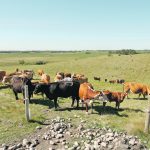Researchers to collect more data to test the argument that rotational grazing improves environmental and animal health
Champions of rotational grazing often say it improves soil health, compared to continuous grazing. Their argument is compelling. If a producer puts many cattle in a small paddock, for a short period of intensive grazing, it will concentrate manure and nutrients in that part of the field. Then, after a period of rest, the soil […] Read moreTag Archives Cattle Connect — page 3

Research looks for ways to assess heifer fertility
Project uses bolus technology to help identify the factors that producers could look for when acquiring replacements
A researcher wants to save cow-calf producers time and money by finding better ways for them to choose the best replacement heifers for their operations. “We want to know if we can assess something — some traits, some indicator — earlier in the season instead of having to wait until you turn them out with […] Read more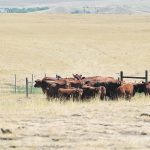
Body position key to cattle handling
An understanding of body position relative to the animals called key to reducing pressure and keeping the situation calm
Lee Sinclair of Merck Animal Health said an understanding of body position relative to the animals is key to reducing pressure and keeping the situation calm.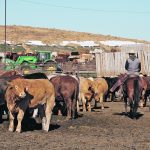
Horses can play an important role in feedlots
Feedlot horses’ attitude, energy and disposition send important messages to cattle and make handling them much easier
Cattle will sense the confidence, or lack of it, within the horse and will alter their movements accordingly, says Dr. Tom Noffsinger, a veterinarian with Production Animal Consultation.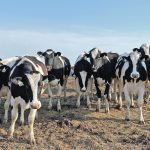
Probiotic developed for dairy cattle
University of Alberta researcher says using probiotics to prevent infection could reduce disease and lower antibiotic use
The use of probiotics to prevent infections could help lower the incidence of diseases, potentially reducing the need for treatment with expensive antibiotics, said Burim Ametaj, who is a professor of physiology and nutritional immunology at the University of Alberta.
Herd health, economics based on water quality
A former livestock specialist says insufficient water intake reduces an animal’s performance faster than any other nutrient deficiency
Water comprises 50 to 80 percent of an animal’s live weight and insufficient intake reduces performance faster than any other nutrient deficiency.
Vertical mixers get their day in the sun

Polio symptoms linked to high sulphate levels
Sulphate toxicity is one of the leading causes of polio encephalomalacia, which can be prevented by testing water quality
Symptoms of polio encephalomalacia (PEM) include progressive blindness, difficulty walking, depression and seizures in cattle.
Keep close eye on blue-green algae this summer
Heavy blooms appear as a solid shimmering blue-green sheen across the dugout water’s surface with a “pea soup” quality
Often called blue-green algae, cyanobacteria produce toxins that can cause liver damage, gastroenteritis and even death if ingested by livestock.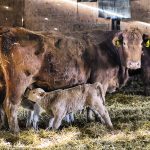
Some moms just need to be persuaded
A cow or heifer that refuses its own calf often doesn’t have the hormone it needs to be motherly or hasn’t released its milk
Many ranchers have a trick or two up their sleeves to convince a cow or heifer to accept a calf that’s not its own. “It’s always about putting a calf onto a cow that doesn’t really want it. Sometimes that can be her own calf, but typically it’s trying to place an orphan or twin […] Read more


